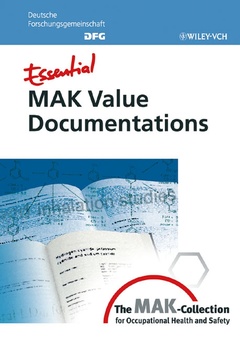Description
Essential MAK Value Documentations: From the MAK-Collection for Occupational Health & Safety
Author: GREIM Helmut
Language: English
Subjects for Essential MAK Value Documentations: From the...:
Approximative price 144.84 €
Subject to availability at the publisher.
Add to cart
Publication date: 03-2006
490 p. · 24x17 cm · Hardback
490 p. · 24x17 cm · Hardback
Description
/li>Contents
/li>
For the 20 most important occupational toxicants, the documentations for the established MAK values are provided. These include an authoritative review of the available toxicological studies and data. For every substance, toxic effects, mechanisms and modes of action, toxicogenetics and metabolism, effects in man and animals are described. The carcinogenic, germ-cell mutagenic, sensitizing or skin-resorptive effects as well as their toxicity to the reproductive system are evaluated. Basic physico-chemical data are provided as well. The documentations are thus not only essential for the application of MAK values but provide a concise toxicological overview for each substance. The documentations are authoritative, because they were compiled by the Commission for the Investigation of Health Hazards of Chemical Compounds in the Work Area. The Commission is internationally acknowledged for its neutrality and is working strictly according to transparent, scientific criteria. MAK Values set the standards for legal regulations in many countries of the world, e. g. they are the basis for at least 30 % of the threshold limits valid in the European Union and they are also frequently referred to in China.
GENERAL ASPECTS Significance, use and derivation of MAK-Values Changes of the classification of carcinogenic chemicals Metal-working fluids, hydraulic fluids and lubricants Sensitizing Substances SUBSTANCES alpha-Amylase Arsenic, inorganic compounds Carbon disulfide Cereal flour dust Chloroform 1,4-Dioxane Dust, general threshold limit value Ethanol Ethylene glycol monobutyl ether Ethylene oxide Formaldehyde Germ cell mutagens Hexachlorobenzene Ozone Passive Smoking Styrene Trichloro ethylene
© 2024 LAVOISIER S.A.S.



